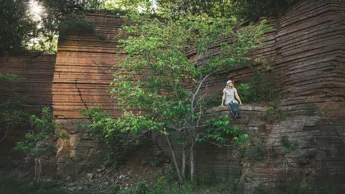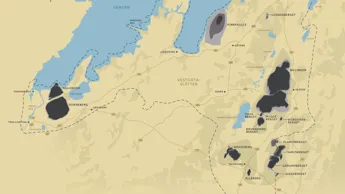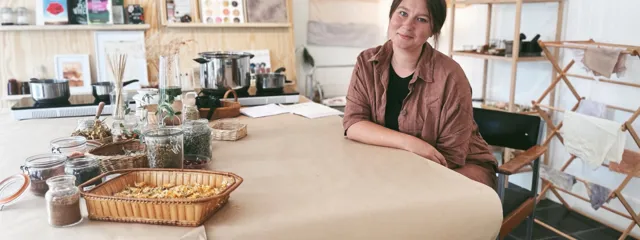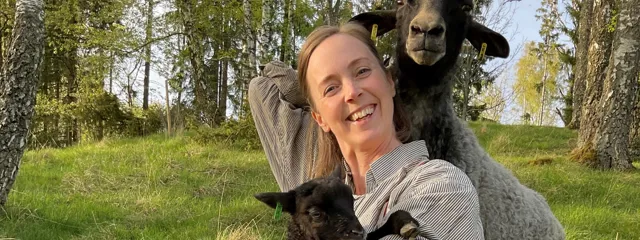Table rocks, a Unesco Global Geopark: Magnificent experiences in a globally unique landscape shaped by time


Table rocks, a Unesco Global Geopark: Magnificent experiences in a globally unique landscape shaped by time.
Geological events over millions of years have shaped what we call the table rock landscape. A landscape renowned for its dramatic rock cliffs, huge quarries, regal moose, dancing cranes, soaring sailplanes, blossoming mountains, Christian vikings, megalithic tombs, millstones, golden treasure and a vigorous outdoor life.
The table rock landscape is located between Sweden’s two largest lakes, Vänern and Vättern, and in simple terms, the area comprises the Västgöta plain and the 15 table rocks that frame it. There can be no doubt that the landscape is special. Lovers of life and fresh air fans have always been enchanted by the beautiful table rock landscape. Here, dignitaries such as Carl Linnaeus and polar Explorer S.A. Andrée have been fascinated and amazed by the biology and geology alike.
What is a Geopark?
Platåbergens Geopark has been nominated as Sweden’s first UNESCO global geopark. Proof enough that the area has globally unique geological values that are of international importance. Today, there are 177 UNESCO global geoparks in 46 countries around the world. A geopark must do a number of things. One is to spread awareness about the geological values that exist in the area. Another is to highlight the connection between geology and our natural and cultural heritage. A third is to sustainably develop the hospitality industry and tourism in the area. A geopark should also increase our understanding of how best to manage our natural resources and our planet.
But people don’t need to know all the scientific reasons why the table rock landscape is so unique to be touched by it. Just being here, breathing and seeing is enough. The table rock landscape is yours to experience whether you want to go hiking, mountain biking, birdwatching, kayaking, gliding, riding, skiing, hiking in snowshoes, enjoying a coffee in a café or just breathing in spring fragrances in flourishing woodlands. It’s also a place for kicks as well as peace and quiet.
You’re never far from magnificent natural experiences thanks to the many characteristic types of landscapes. The base-level plane – the bedrock surface – with its flat rock slabs is Sweden’s oldest preserved landscape form. The table rock plateaus offer coniferous woods, extensive bogs and breathtaking views. On the rock slopes, below the dramatic precipices, are broadleaf groves, old oak pastures, flowering fens and soggy marshes. In several places we come across limestone pavements, something otherwise reminiscent of Öland and Gotland. Below the hills, the spreading plain is home to fertile soils, shallow lakes and preserved cultural landscapes. In the area we also find something known as kame landforms, with rolling hills, ridges and small lakes. With so many different examples of nature, no wonder the table rock landscape is virtually crawling with nature reserves. There are also two Visitor Centers.

Questions about Skaraborg? Contact our relocation guides!
We answer questions about work, housing, leisure, and much more. Fill out our contact form and receive personalized guidance for your life in Skaraborg.
Contact us
But the varied table rock landscape offers more than just magnificent nature experiences. The fertile plain was the best place for humans to settle after the last ice age. Culture and communities soon emerged. The many megalithic tombs built from large boulders around 5,000 years ago bear testimony to this. Later, the use of stone as a building material continued with the erection of churches, monasteries, castles, strongholds and simple dwellings. Many remain, but some have become ruins. Local inhabitants throughout history – such as the sacrificed Luttra Woman from the Stone Age, the mighty Viking woman Kata, Count Gabriel de la Gardie or Sweden’s last caveman “Lasse in the Mountain” – testify to changing prosperity. It’s not for no reason that the table rock landscape has seen so many of the country’s most interesting historical finds. What’s more, the area has proven to be the center of an earlier Christianization of Sweden than previously known.
The table rock landscape is full of traces showing how the local stone became a livelihood for man. The history of quarrying can be seen in many parts of the area. There are a great many remains from quarries, lime mills, millstone quarries and oil shale workings. Today we also gain insights into the life and times of stone workers through the area’s well attended working life museums.
From ancient times to the present day the table rock landscape has slowly changed, but through every age it has meant quality of life for plants, animals and us humans. Since the landscape was formed, people have left their mark on it throughout the ages. What were once modern times, we see today as valuable cultural and industrial history. Taken together, these things create a wealth of points of interest like no other.
Visit the Geopark’s own website to find out more!
Welcome to the table rock landscape!





